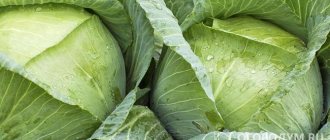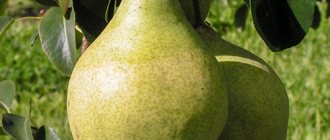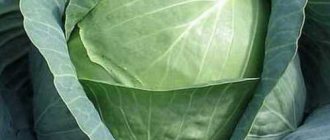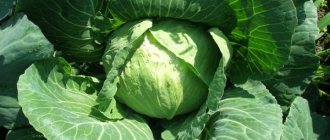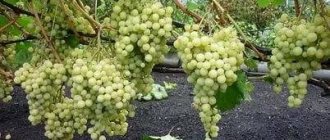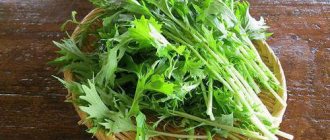Cabbage June characteristics and description of the variety, reviews, photos, the yield of which are presented in this article, is very popular among Russian gardeners. The June cabbage variety was included in the State Register in 1971. Over the years, the variety has shown its best side. It has an early ripening period, the heads of cabbage grow large with a set of nutritional elements.
Initially, this variety was called June 3200. However, over time, the numbers were lost, but some seed manufacturers still put them on the packaging. Also sometimes they write “Early June Cabbage” on the packaging.
Description and characteristics of the variety
- The most popular variety among early ripening varieties. Heads of cabbage become mature after June 15th. They can be cut 90-100 days after germination.
- About 6 kg of cabbage grows on one square meter of planting.
- Withstands frosts down to -5 degrees.
- Is cultivation suitable in all regions of Russia?
- Shows average resistance to cabbage fly and cruciferous flea beetle.
- Does not crack even when ripening in high humidity conditions.
- This variety has excellent taste, but has a short shelf life, so it is grown for fresh consumption.
Useful tips
Experienced vegetable growers successfully grow early varieties of cabbage, but beginners sometimes encounter difficulties, especially when it comes to seedlings. Gardeners advise:
- if the seedlings are very elongated, give them more light and reduce the temperature by 2–4°C;
- when stopping the growth of cabbage, pay attention to the level of soil moisture;
- if the lower leaves dry out for no reason, plant the bushes (they are thickened);
- if wilting occurs, but there are no other signs of disease, start loosening the soil more often (there is a lack of oxygen);
- cabbage turns yellow when it lacks iron and phosphorus or has an excess of salts;
- if you need to grow the largest heads of cabbage, shade them (cover them with burdocks, make a mesh camouflage cover to a height of 50–70 cm);
- To prevent leaves from becoming loose, spray with boric acid.
Fruit characteristics
- Smooth, rounded head of cabbage.
- Has a presentable appearance.
- Density is rated 4 out of 5.
- Average weight from 0.9 to 2.4 kg.
- Vegetables ripen together, making harvesting easier.
- The upper leaves are light green, the inner cut is white-yellow.
- Leaf rosette with a diameter of 40-50 cm.
- Contains many nutrients, especially vitamin C.
- The yield of marketable products is about 97%.
- Poorly preserved standing in the garden after ripening.
Harvesting
June cabbage reaches technical maturity in the temperate zone of Russia by the end of June. In the southern regions this happens 20 days earlier. The readiness of the harvest is indicated by yellowed lower leaves and dense, hard forks.
Heads of cabbage of Juneweed are usually dense and even. They should not be stored on the root. The variety is not adapted to this. The coming summer heat, as well as rain, can cause damage to the forks (they will crack and wither). Therefore, the entire June must be cut off immediately, as soon as the heads of cabbage acquire the density inherent in the variety.
Heads of June cabbage are ripening together, but they must be collected without putting them off for “later”
Among summer residents, there are opinions that June cabbage can stand on its roots for up to 10 days without cracking or withering. Perhaps, under certain atmospheric and weather conditions, such preservation takes place. But it’s still better not to risk the harvest, because it is impossible to predict the weather and its effect on cabbage for the next 10 days.
It is recommended to collect heads of cabbage in the morning. The cabbage is cut not directly under the fork, but keeping 2–3 cm of the stalk. This will better preserve the juiciness and all the nutrients.
If you leave a couple of lower leaves on the root when cutting, they will begin the second growing season and by the end of August each will produce a fork. They will not match the size and weight of their June counterpart, but they are quite suitable for excellent cabbage soup.
June cabbage can set heads again if you leave the lower leaves on the stem when cutting the June harvest
Advantages and disadvantages
Among the advantages of the variety are the following:
- Early ripening.
- High-yielding.
- Suitable for cultivation throughout Russia, Ukraine, Belarus and the CIS countries.
- Resistant to returning spring frosts.
- Presentable appearance.
- Medium resistant to cruciferous diseases.
- The forks do not crack during ripening.
The disadvantages include the following characteristics:
- Short-term storage on the root and at home.
- Not suitable for fermenting winter preparations.
Reviews from gardeners
Natalya, 44 years old, Nizhny Novgorod.
I liked June cabbage for its tenderness, juiciness and sweetness. They make delicious salads. And growing it is not so difficult. I have been planting the variety for 4 years and have never had any serious problems.
Vitaly, 57 years old, Chelyabinsk region
It’s a good variety and, importantly, grows in our harsh conditions. I first plant seedlings, then transfer them (during picking) to a polycarbonate greenhouse (it is heated). She grows up quickly. There is only one disappointment - very little is stored.
Victoria, 35 years old, art. Dolzhanskaya, Kuban
I started growing June plant about 10 years ago, first for myself, and now for sale. I can say that the culture is not very demanding, and in our climate zone it ripens already on the 80th day. The heads of cabbage are quite heavy, which means it is profitable.
June cabbage is considered a dietary and healthy product. It is able to compensate for the deficiency of microelements after spring vitamin deficiency. Growing vegetables is not difficult. The number of agrotechnical measures does not differ from the procedures for other varieties. There are variations in the volumes of water and fertilizing.
0
0
Copy link
Features of cultivation
Cabbage is a cold-resistant and cold-loving vegetable, so growing it for seedlings has its own characteristics compared to other vegetable crops.
Preparing for sowing
To prevent cabbage from being exposed to cruciferous diseases, the seeds must be disinfected before sowing. This procedure can be avoided if you bought seed already prepared for planting in packaging from the manufacturer.
To disinfect, the seeds are kept for 20 minutes in hot water at a temperature of 45-50 degrees. Next, they are dipped in cold water for a few minutes and dried on a napkin until crumbly.
The most reliable way is to soak the seeds in a solution of phytosporin (1 g per 1 l) for 10 hours.
Cabbage withstands transplantation well, so the seeds can be sown directly into boxes. However, if you do not need a large number of seedlings, but timing is important, it is better to sow immediately into separate cups. Then the seedlings will develop faster and can be transplanted into the ground earlier.
Important! The soil must be neutral or slightly alkaline.
The soil should be loose, breathable and fertile. To do this, it is recommended to add a little vermiculite to it.
When to plant cabbage seedlings
If containers with crops are kept in a warm room, seedlings may appear in 2-3 days. The lower the temperature, the longer germination will take.
Important! To successfully grow seedlings, boxes with seedlings after germination must be moved to a room with a temperature no higher than 10 degrees for 8-12 days.
To do this, seedlings can be placed on the balcony. If it is very cold there, you can make a small greenhouse. At this time, there is no point in keeping seedlings indoors, as they will stretch out and die.
After the specified time, the seedlings can be brought into the house. If they were planted in one box, they are picked into separate cups.
Advice! When transplanting, plants can be buried down to the cotyledon leaves.
After picking, the seedlings are kept in a room with a temperature of 18-20 degrees for several days, after which they are placed back in cool conditions. During the day, the temperature should be kept within 16 degrees, and at night no higher than 10-12 degrees.
At this temperature, cabbage seedlings will be able to develop and strengthen in order to produce a full-fledged harvest in the future.
Watch the video! June cabbage
Cabbage seedlings in protected ground
Many Russian gardeners prefer to grow cabbage seedlings directly in the beds. Sometimes greenhouses or greenhouses are used for this, but not everyone has them.
To do this, seeds that have previously been disinfected are sown in beds prepared in the fall with loose and fertile soil. This procedure is carried out from April 15 to April 30.
Before sowing, the beds are watered with hot water. The seeds are buried 1 cm at intervals of 2-4 cm from each other. Subsequently, weak shoots are carefully removed, the rest are replanted at large intervals. After sowing, arcs are installed over the bed and covered with thick non-woven material, which is pressed on all sides of the bed with stones in the ground.
With this method of growing, there is virtually no need to care for seedlings. Humidity and temperature are maintained at the required level. Rain penetrates the material and prevents the seedlings from drying out. When several true leaves appear on the seedlings, it can be thinned out. From May 1 to May 15, seedlings are planted in a permanent place without shelter. Seedlings with this method of growing grow hardened, healthy, strong, rich green in color.
Further care for cabbage
Caring for cabbage plantings consists of standard procedures, including watering, loosening, weeding and fertilizing. Primary attention should be paid to the correct mode of watering the vegetable. June cabbage is moisture-loving, watering is extremely important for it, especially during the period of setting heads. It is advisable to carry it out in the evening, using settled water heated in the sun.
Important! After planting seedlings, during the period of fruit formation, as well as in hot weather, water the plants every 2-3 days, using at least 7-8 liters of water per 1 square meter. landing meter. The rest of the time, you can water the plants less often: once a week.
Weak growth of green mass indicates a lack of moisture for the plant
Note! In order to retain moisture in the soil longer, as well as additionally nourish the plants, it is recommended to mulch the beds with peat.
After each watering or rain, cabbage plantings must be loosened. The depth of loosening should be 5–8 cm. In addition to loosening, it is recommended to hill up the cabbage. The first hilling is carried out 20 days after planting the seedlings. The second - after 10 days. This procedure promotes the formation of additional lateral roots on the plant. Hilling will bring greater effect if it is carried out, like loosening, after rain or heavy watering.
Feeding cabbage
In the initial phase of active leaf formation, it is recommended to feed cabbage with ammonium nitrate: dissolve 10 g of fertilizer in 10 liters of water. The consumption rate is 2 liters per plant. At the very beginning of the formation of a head of cabbage on insufficiently nutritious soils, a second feeding can be done. For it, take urea (4 g), double superphosphate (5 g) and potassium sulfate (8 g). These fertilizers are dissolved in 10 liters of water and 2 liters of solution are poured onto the plant.
Important! It is not recommended to feed June cabbage later, so that nitrites harmful to the human body do not accumulate in it.
Video: fertilizing cabbage with nitrogen
Treatment of June cabbage from pests
Early cabbage is a favorite vegetable of many pests. Aphids, caterpillars, cruciferous flea beetles, chafer larvae, cutworms, and cabbage flies prefer cabbage to other garden plants. Pesticides help effectively control pests, but in the case of cabbage, gardeners use them with caution so as not to poison the valuable vegetable. Therefore, it is better to use preventive measures to prevent the appearance of numerous pests, as well as folk remedies, which, if used in a timely manner, will be effective and safe for the vegetable itself.
The following can be mentioned as preventive measures:
- compliance with crop rotation;
- preventing freezing and injury to seedlings;
- weed control. Pests settle on plants related to cabbage (colza, shepherd's purse, etc.), and then move to the vegetable beds;
- loosen the soil and plant plants weekly;
- cover the plantings with spunbond, which will protect the crops from the cruciferous flea beetle and prevent white butterflies from laying eggs;
- follow the vegetable watering regime.
Note! An excellent preventive measure is dusting young plantings with a mixture of ash and tobacco dust. In this case, slugs and fleas will bypass your plants.
Planting cabbage next to herbs is one of the preventive pest control measures:
- the cabbage fly will be repelled by the pungent smell of garlic;
- the cabbage cutworm will not approach the plantings if sage is planted nearby;
- dill and tomatoes prevent the appearance of cabbage aphids;
- Slugs do not like the aroma of borage;
- The cabbage fly and white butterfly are repelled by the smell of wormwood. Many gardeners pick this plant and place it directly on top of the emerging heads of cabbage.
Plants such as marigolds, mint, rosemary, basil, and cilantro will also be protective neighbors for cabbage.
Photo gallery: pests of June cabbage
When white butterflies appear on the site, you should carefully inspect the leaves and destroy the egg clutches.
You can use a vinegar solution against cruciferous flea beetles: a glass of 9% vinegar per 10 liters of water.
Cabbage fly is controlled by hilling, pollination with ash and tobacco, and spraying with wormwood decoction.
When the pest spreads massively, contact chemicals are used - Fufanon, Karbofos
At the first signs of the appearance of slugs, the soil around the cabbage should be sprinkled with mustard powder, and traps should be placed near the area (bury a shallow bowl with kvass, beer or sweet water with yeast)
Clubroot cabbage
The characteristics of June cabbage note its weak resistance to diseases such as clubroot. This is a common cabbage disease in which numerous growths and swellings form on the roots of the plant. It can enter the site along with infected purchased seedlings, in which it is extremely difficult to diagnose the disease.
Clubroot is dangerous because the root system of the affected vegetable does not function well: it does not absorb enough water and nutrients. As a result, cabbage leaves wither, turn yellow, and there may be no heads of cabbage at all or they will be small and underdeveloped.
The infection persists in the soil, on weeds, on post-harvest residues, and is introduced into beds with infected seedlings
Pathogenic bacteria remain in the soil for a long time and quickly spread throughout the entire area through garden tools, plant debris, earthworms, slugs and other soil organisms. If this disease occurs, you need to understand that the affected plant cannot be cured. It is necessary to disinfect the soil by adding freshly slaked lime or spilling a 0.1% solution of the fungicide Fundazol.
Sowing time
Seedlings are planted after 50 days
The optimal period for sowing early cabbage seeds is from March 1 to March 28. In some regions of Russia and Ukraine, this period has been shifted to an earlier date: mid-February - mid-March.
The germination time of seeds in the soil, from sowing to the appearance of the first shoots, is 10 days. The time from the appearance of the first shoots to planting in open ground is 50-55 days.
Sowing of seeds should take place 60-65 days before planting, and 30-35 days after planting the seedlings should be harvested.

